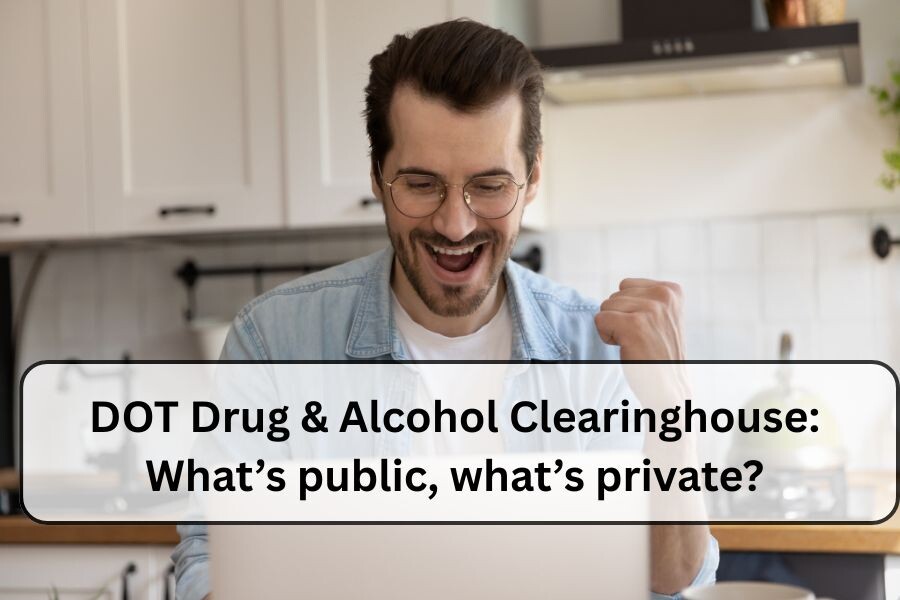If you work in a DOT-regulated safety-sensitive position, you’ve likely heard of the DOT Drug & Alcohol Clearinghouse: What’s public, what’s private? This critical system tracks violations and Return-to-Duty progress, but many drivers and employers wonder exactly what information is visible and to whom. Here’s a complete breakdown.
What is the DOT Drug & Alcohol Clearinghouse?
The DOT Drug & Alcohol Clearinghouse is an online database mandated by the Federal Motor Carrier Safety Administration (FMCSA). It contains records of drug and alcohol program violations, Return-to-Duty (RTD) status, and follow-up testing plans.
Employers, law enforcement, and government agencies use this system to ensure only compliant drivers operate in safety-sensitive roles.
For more details, visit the FMCSA Clearinghouse.
What Information is Public?
In the context of the DOT Drug & Alcohol Clearinghouse: What’s public, what’s private?, here’s what is accessible to authorized parties (but not the general public):
Current Employers (with consent): Can view your violation history, RTD status, and any remaining follow-up testing.
Prospective Employers (with consent): Can check for unresolved violations or pending RTD steps.
State Licensing Agencies: Can access violation information to enforce commercial driver’s license (CDL) restrictions.
Important:
The general public cannot access Clearinghouse data. A driver’s records are private unless consent is given to authorized users.
What Information is Private?
The following details remain strictly confidential and protected:
Detailed evaluation or treatment notes by SAPs.
Medical history unrelated to drug/alcohol violations.
Personal background or unrelated driving records.
Even employers can only see violation status — they cannot see sensitive medical information or counseling details unless required by DOT compliance procedures.
For specifics on handling SAP records, check our DOT SAP Program page.
Who Can Access Your Clearinghouse Records?
| Party | Access Level |
|---|---|
| Current Employer (with consent) | Full violation and RTD status |
| Potential Employer (with consent) | Limited to pending or unresolved violations |
| State Licensing Agencies | Violation status only |
| FMCSA Officials | Full access |
| General Public | No access |
When discussing DOT Drug & Alcohol Clearinghouse: What’s public, what’s private?, privacy matters greatly. Drivers are protected from:
Unauthorized disclosure of sensitive data.
Employer misuse of personal information.
Data breaches by stringent FMCSA regulations.
If you’re unsure about who can see your Clearinghouse records, consult your SAP or visit the Return to Duty Process page.
FAQs on DOT Drug & Alcohol Clearinghouse: What’s Public, What’s Private?
Q1: Can my friends or family check my Clearinghouse records?
No, only authorized and approved parties can view them.
Q2: Is my SAP evaluation result visible to employers?
Only the completion status — not the detailed content — is visible.
Q3: Will a violation stay on my Clearinghouse record forever?
No, records remain for 5 years or until Return-to-Duty requirements are completed, whichever is later.
Conclusion
Understanding the DOT Drug & Alcohol Clearinghouse: What’s public, what’s private? gives drivers confidence in how their personal and professional data is handled. While employers and agencies access essential compliance details, your sensitive information remains secure and confidential.
For expert guidance on Clearinghouse compliance and SAP evaluations, contact AACSCounseling.com.

Review DOT Drug & Alcohol Clearinghouse: What’s Public, What’s Private?.